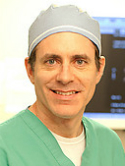18F-FDG PET/CT for the prediction and detection of local recurrence after radiofrequency ablation of malignant lung lesions Journal Article
| Authors: | Singnurkar, A.; Solomon, S. B.; Gonen, M.; Larson, S. M.; Schoder, H. |
| Article Title: | 18F-FDG PET/CT for the prediction and detection of local recurrence after radiofrequency ablation of malignant lung lesions |
| Abstract: | The utility of 18F-FDG PET/CT for response assessment in malignant lung tumors treated with radiofrequency ablation (RFA) and for the detection and prediction of local recurrence was investigated. Methods: Between December 17, 2003, and April 9, 2008, 68 consecutive patients (mean age, 68 y) with 94 pulmonary lesions, including metastases (n = 38) and primary lung cancers (n = 44), underwent RFA. Because of inadequate imaging follow-up in 12 patients, only 82 lesions were analyzed (CT scans, n = 82; 18F-FDG PET/CT scans, n = 62). The median follow-up was 25 mo (range, 12-66 mo). A baseline study was defined as 18F-FDG PET/CT performed no more than 3 mo before RFA. The first postablation scan was defined as PET/CT performed between 1 and 4 mo after RFA; additional follow-up studies were obtained in some cases between 6 and 12 mo after RFA. The unidimensional maximum diameter of the lesion was recorded on a pretherapy diagnostic CT scan or on the CT component of a pretherapy 18F-FDG PET/CT scan, whichever was obtained most recently, using lung windows. Maximum standardized uptake values (SUVs) were recorded for all lesions imaged by 18F-FDG PET/CT. 18F-FDG uptake patterns on post-RFA scans were classified as favorable or unfavorable. Survival and recurrence probabilities were estimated using the Kaplan-Meier method. Uni- and multivariate analyses were also performed. Results: Before RFA, factors predicting greater local recurrence-free survival included initial lesion size less than 3 cm (P = 0.01) and SUV less than 8 (P = 0.02), although the latter was not an independent predictor in multivariate analysis. Treated metastases recurred less often than treated primary lung cancers (P = 0.03). Important post-RFA factors that related to reduced recurrence-free survival included an unfavorable uptake pattern (P < 0.01), post-RFA SUV (P < 0.01), and an increase in SUV over time after ablation (P = 0.05). Conclusion: 18F-FDG PET/CT parameters on both preablation and postablation scans may predict local recurrence in patients treated with RFA for lung metastases and primary lung cancers. Copyright © 2010 by the Society of Nuclear Medicine, Inc. |
| Keywords: | adolescent; adult; cancer survival; human tissue; treatment outcome; treatment response; aged; aged, 80 and over; middle aged; primary tumor; retrospective studies; young adult; major clinical study; cancer recurrence; treatment duration; cancer radiotherapy; disease free survival; positron emission tomography; follow up; methodology; follow-up studies; radiopharmaceuticals; adenocarcinoma; computer assisted tomography; neoplasm recurrence, local; image interpretation, computer-assisted; lung neoplasms; lung cancer; pathology; retrospective study; risk; lung tumor; lung metastasis; diagnostic agent; computer assisted diagnosis; tumor recurrence; cancer size; fluorodeoxyglucose f 18; computer assisted emission tomography; fluorodeoxyglucose f18; positron-emission tomography; predictive value of tests; radiopharmaceutical agent; scintiscanning; kaplan meier method; radiofrequency ablation; predictive value; catheter ablation; tomography, emission-computed; kaplan-meier estimate; 18f-fdg pet/ct |
| Journal Title: | Journal of Nuclear Medicine |
| Volume: | 51 |
| Issue: | 12 |
| ISSN: | 0161-5505 |
| Publisher: | Society of Nuclear Medicine |
| Date Published: | 2010-12-01 |
| Start Page: | 1833 |
| End Page: | 1840 |
| Language: | English |
| DOI: | 10.2967/jnumed.110.076778 |
| PUBMED: | 21078787 |
| PROVIDER: | scopus |
| DOI/URL: | |
| Notes: | --- - "Cited By (since 1996): 1" - "Export Date: 20 April 2011" - "CODEN: JNMEA" - "Source: Scopus" |
Altmetric
Citation Impact
BMJ Impact Analytics
MSK Authors
Related MSK Work







